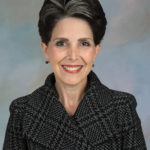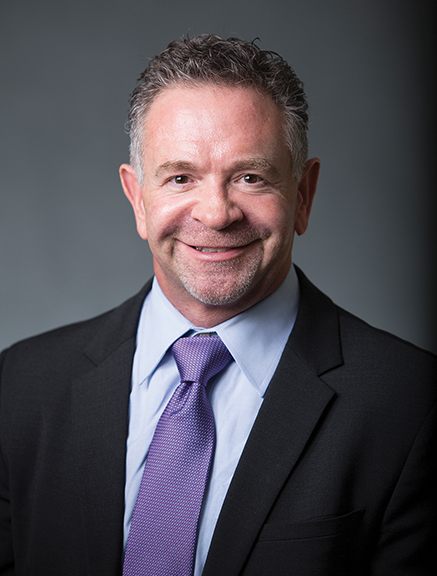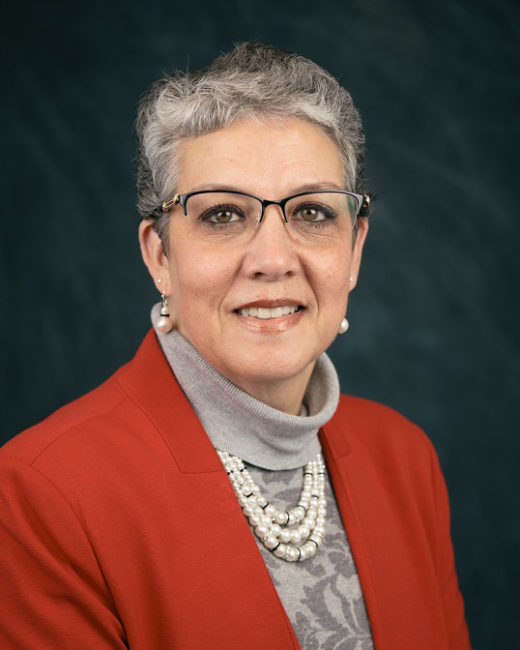Meeting the Needs & Challenges of an Aging Patient Population

When Caroline Fife, M.D., sees patients over 65 at the CHI St. Luke’s Wound Clinic in The Woodlands, Texas, she no longer asks, “What did you do for a living?” She now asks if they are still working because many of her patients have yet to retire. Working into their golden years is just one of the ways aging Americans are defying the norms of previous generations and changing expectations for how they want to live the rest of their lives.
Today’s seniors also aspire to stay active and independent as long as they can, even when their bodies struggle to keep up. This resiliency is shared by many of the 75 million Americans born between 1946 and 1964. Baby boomers may be rapidly reaching retirement age, but few are ready to slow down or can afford to stop working.

Dave Jevsevar, M.D., sees this firsthand in his orthopedics practice at Dartmouth-Hitchcock Medical Center in Lebanon, New Hampshire. He consults with a steady stream of patients in their 50s and 60s eager to trade in their rusty joints for new hips and knees.
“They want to do more things, and they don’t want to be encumbered by pain and the loss of function,” Jevsevar explains.
Improvements in anesthesia, minimally invasive surgical techniques, recovery times and implants have made joint replacement surgery more appealing than in years past, when patients often delayed the surgery for decades or until the pain became debilitating.
“In addition to a pain reduction, patients also want improved functionality so they’re able to get back to skiing, playing sports and other activities they enjoy,” he says.
Though Jevsevar does recommend the surgery for patients who want to be more active, some are so anxious for bionic joints, it’s important that he also manages their expectations about how much implants can actually help. “We have to make sure the expectations patients have match the outcome they will likely experience,” he says.
Americans Living Longer, Not Healthier
Despite advances in medicine, clinical care and technology that help people live longer and more comfortably, research indicates baby boomers are becoming sicker as they age and facing higher rates of chronic disease than previous generations. Though boomers may see themselves as invincible, the indulgent, rollicking ethos that marked their generation also has made them more vulnerable to chronic conditions such as hypertension, high cholesterol, diabetes and obesity, according to a 2013 study in JAMA Internal Medicine. Researchers from the West Virginia University School of Medicine and the Medical University of South Carolina found that boomers tended to be less active and have more mobility issues than their elders.
Obesity has been linked to rising disability rates in boomers, a consequence Jevsevar sees often among his patients. Weight gain can exacerbate conditions like arthritis and make damaged joints and pain less tolerable. “The wear and tear of joints is largely due to the fact that people weigh more than in previous generations,” he says.
Four out of every five adults over age 65 suffer from a chronic condition, and more than half of those juggle two or more maladies, according to the National Council on Aging. Depending on how many ailments a patient has, these conditions are costly to treat—ranging between $15,000 to $50,000 per person. In addition, nearly two-thirds of all deaths are caused by the most common illnesses: heart disease, cancer, stroke and diabetes. Boomers have also shown higher rates of cancer at younger ages than their parents, though this may be partly due to technologies that have improved detection.
The rising chronic care needs among older patients, coupled with the double-digit increase in boomers eligible for Medicare over the next decade, will threaten to strain an already overtaxed healthcare system, leaving hospitals to bear the regulatory and financial burdens. As boomers with multiple conditions age, medications enable them to live longer. As a result, hospitals are devising creative strategies for balancing the influx of these patients with complex health needs along with the quality of life this growing population desires.
Baby Boomer 411 for Providers
Adults born in the baby-boom generation are the fastest aging population in the United States, with about 3 million baby boomers hitting retirement age every year over the next decade and a half. By 2030, adults over 65 will make up 20 percent of the U.S. population. What do hospital leaders need to know about healthcare consumers in this generation?
- They are loyal but tough customers. Older boomers (ages 65–72) are the least likely to leave their physicians and the most likely to recommend them to others. They prefer to stay with longtime providers and value medical credentials and hospital affiliation when making care decisions. Younger boomers (ages 54–64) are more likely to leave their provider if they’re dissatisfied with the quality of care or even break a referral to find a specialist of their choice.
- They like convenience and staying close to home. Both older and younger boomers would rather not travel for their care and consider travel time a key factor when choosing primary care physicians and specialists. Younger boomers indicate they would pay more for access to earlier appointments.
- They are sensitive to cost. Younger boomers care about affordability when choosing a specialist or surgeon and are more likely to shop around for the best deal.
- They are open to technology. Boomers are receptive to mobile technologies and say they would consider a virtual visit with a doctor if in-person care wasn’t available. Younger boomers are especially adept at using tools to remotely monitor their health and wellness. Source: The Advisory Board. A 2017 survey conducted across age groups.
At the St. Luke’s Wound Care Clinic at The Woodlands Hospital in Houston, Texas, Caroline Fife, M.D., has noticed something else about her boomer patients over 65: They like to be in the know.
“They all want to understand what’s going on,” Fife explains. “I sketch out the circulatory system for them on my clipboard and make lists of the issues we need to address, diagnoses we need to explore and labs we need to obtain. I write down every medical term they need to know, and how often they’ll need to return and for how long. I make a list I call their ‘homework’ that may include getting nutritional supplements, having blood drawn or bringing me the results of a prior angiogram. Then I tell them I will be checking their homework. The percentage of them who say that they will be reading about this at home on their computer is very high.”
Impact on Clinical Care
One area of clinical care most impacted by the chronic disease epidemic is wound care, which affects nearly 15 percent of seniors and conservatively accounts for more than $28 billion in Medicare spending per year. When wound infections are included, the cost could be more than three times that figure.
More than half of the patients who visit the CHI St. Luke’s Wound Care Clinic are over 65, and most of them struggle with multiple health issues, including diabetes, obesity, autoimmune disease, and heart and kidney problems, says Fife, who serves as medical director of the center and executive director of the U.S. Wound Registry. The average patient with a chronic wound may juggle up to 10 of these conditions and take a dozen different medications.
“Many of these patients never really get discharged because as soon as we get one wound healed, they’re back with another one,” she says. “We can’t fix all the underlying problems causing the wounds. The wounds are actually a symptom of other diseases.”
Surgical site infections are the most expensive causes of wounds among elderly patients, but diabetic foot ulcers, pressure ulcers from bedsores and venous stasis ulcers caused by damaged veins are also common, Fife explains.
Having thinner skin that stays wet from urinary and bowel incontinence, along with failing eyesight and an increased risk for falls, make seniors more prone to wounds from traumatic injuries.
“They can bang their leg on an open dishwasher door or bump into a door frame, and their skin tears like a wet paper towel,” Fife explains.
The fragility of the skin, along with years of sun damage, makes healing from these injuries more difficult for seniors. Medications like blood thinners and some corticosteroids and cancer drugs also hamper wound healing for those taking them.
Whatever the ailment, treating patients with multiple conditions typically requires the input of several specialists, along with a primary care physician (PCP). This can be difficult to coordinate with the structure of the current healthcare system, but providers are tackling this by implementing team-based models of care that draw upon the expertise of a caregiver network that may include geriatricians, nurse practitioners, social workers, pharmacists, dietitians and audiologists. Some hospitals even require nurses and technicians to undergo basic geriatric training, while others are developing acute care units for the elderly that specialize in case management, urgent care, acute care screening, geriatrics, and psychiatric and social care.
New value-based care delivery and reimbursement models being tested by Medicare also show promise for improving the effectiveness and coordination of care for aging patients. Initiatives include:
- Bundled payments for acute care and post-acute care hospital stays
- Community-based organizations to help patients transition out of the hospital
- Accountable care organizations and patient-centered medical homes that focus on creating closer relationships between patients
- PCPs
- Family caregivers
Clinical researchers are also exploring links between aging and chronic disease to gain a deeper understanding of how to keep people healthier longer.
House Calls Making a Comeback
With more people struggling with chronic conditions and limited mobility as they age, hospitals are revisiting the idea of home health, a service that has been phased out in recent years as providers sought to cut costs.

“We’re going to see some things start cycling back around and becoming more pertinent,” says Angie Mitchell, RN, former AVP of physician services at HealthTrust.
Though advances in telehealth and remote patient monitoring show potential for providing some of these services virtually, “traditional care can’t go by the wayside,” Mitchell says. “We’re still going to need face-to-face interactions with patients that don’t just happen over a computer.”
Increasingly, patients choose to age at home instead of moving into nursing facilities, but for those living miles away from the closest healthcare facility, this can mean less access to care. Homebound elderly patients account for more than half of the costliest 5 percent of patients, according to a study by the University of Virginia’s School of Medicine. Without a physician to check in with them regularly, these patients often end up being rushed to the nearest hospital when their conditions deteriorate.
A small but growing contingent of doctors, nurses and nurse practitioners are reviving the concept of house calls to improve in-home care for elderly patients. The practice, common in the early 20th century, had mostly disappeared by the 80s, but it is making a comeback, thanks in part to Medicare changes that have made these visits easier to bill.
Advocates of house calls say they could help hospitals deliver more cost-efficient, relevant care by helping caregivers keep a closer eye on prevention instead of just treating patients in crisis situations. Home visits can also reveal details about patient needs not as obvious during office visits.
While studies do show that patients do better in their own environment, “there are limits to being able to provide in-home care,” Mitchell explains. “That’s why we’re seeing such an increase in assisted living centers connected to long-term care facilities like nursing homes, because they help ensure that continuity of care.”
Palliative Care in the ER
The prevalence of chronic illness among the elderly is also fueling a rise in the number of seniors making frequent trips to the emergency room. At least one out of every six visits to the ER is made by a patient 65 and older, according to the Centers for Disease Control and Prevention. Half of those adults visit the ER in the last month of their life, according to a study in the journal Health Affairs, and most of those patients are transferred to critical care or acute units, where more than half end up dying.
Repeated exposure to overcrowded ERs full of gunshot and car crash victims can be traumatic and disorienting for patients in the throngs of serious illnesses such as dementia, cancer and heart disease. Even if ER doctors can relieve symptoms such as fever, pain and dehydration, they can’t meet the underlying needs of the critically ill. Without an advance directive or family member to consult with about next steps, ER or ICU doctors typically turn to aggressive care tactics to keep patients alive.
This trend is prompting some hospitals to explore the idea of bringing palliative care, which tends to the psychological and spiritual needs of the terminally ill, into the ER. Proponents of integrating this service into ERs believe it could possibly extend the lives of patients with advanced illnesses by helping them avoid the stressors of acute care units—where they are vulnerable to hospital-acquired infections and delirium—and giving them access to options like hospice care at home sooner.
Though some ER doctors have begun pursuing palliative care certifications or working closely with palliative teams in hospitals, many ER teams are reluctant to initiate end-of-life discussions with patients they hardly know in such a fast-paced, harried setting.
“Palliative care needs to be delivered in the right environment by the right people—and not everyone can do it,” Mitchell says.
Though the strategy has some merit, Mitchell indicates that hospitals should consider the pros and cons carefully and ensure that any palliative care delivered occurs “away from the trauma that comes through the ER. Hospitals need to make sure they’re providing appropriate care for these patients and not contributing to their decline by exposing them to an environment that may compromise them further,” she adds.
The Road Ahead for Hospitals
With a projected shortage of millions of physicians, nurses and caregivers in the years ahead as boomers retire from the medical field or reduce their hours, more care-efficient models and patient-centered technologies could help hospitals fill the growing gap in clinical manpower and expertise while also meeting rising patient demands from aging boomers. But hospitals must be judicious about the models and products they implement going forward, especially with so many expensive new technologies on the market with few proven, clinical outcomes.
“Hospitals will need to take a deeper look internally at their processes and their protocols, including how much of what they do is driven by clinical data versus what’s driven by clinician preference,” Mitchell says.
Wireless and portable technologies, along with point-of-care testing, that allow providers to bring care to patients holds some of the best potential for helping hospitals meet the future needs of aging boomers.
Mitchell explains, “When people think about supply chain, they tend to think about products on a shelf. But, it’s going to be the procurement of wireless and portable technologies and point-of-care capabilities that will help hospitals keep up with the influx of baby boomer patients. That’s what will characterize the supply chain of the future.”
Share Email Patient Experience, Performance Improvement, Q3 2018





